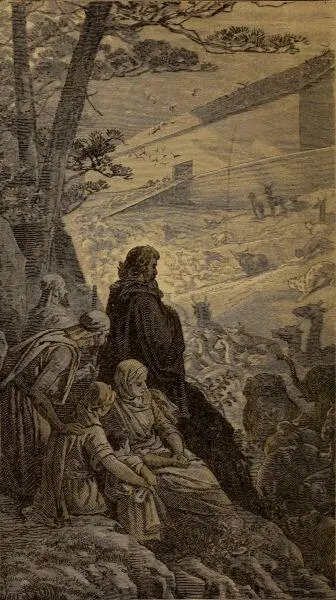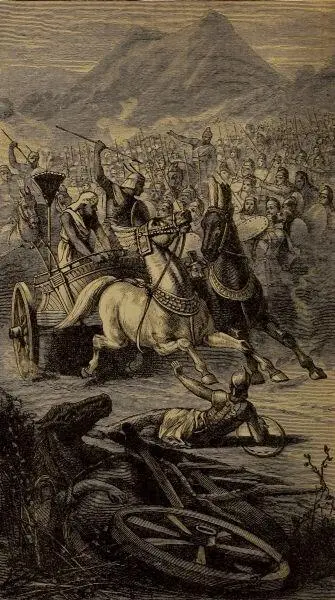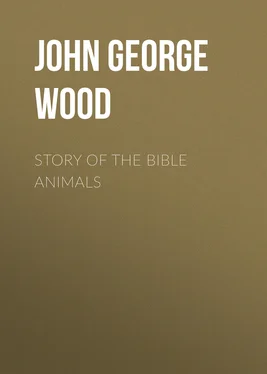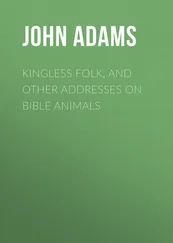John George Wood - Story of the Bible Animals
Здесь есть возможность читать онлайн «John George Wood - Story of the Bible Animals» — ознакомительный отрывок электронной книги совершенно бесплатно, а после прочтения отрывка купить полную версию. В некоторых случаях можно слушать аудио, скачать через торрент в формате fb2 и присутствует краткое содержание. Жанр: foreign_prose, foreign_religion, Философия, foreign_psychology, foreign_antique, на английском языке. Описание произведения, (предисловие) а так же отзывы посетителей доступны на портале библиотеки ЛибКат.
- Название:Story of the Bible Animals
- Автор:
- Жанр:
- Год:неизвестен
- ISBN:нет данных
- Рейтинг книги:4 / 5. Голосов: 1
-
Избранное:Добавить в избранное
- Отзывы:
-
Ваша оценка:
- 80
- 1
- 2
- 3
- 4
- 5
Story of the Bible Animals: краткое содержание, описание и аннотация
Предлагаем к чтению аннотацию, описание, краткое содержание или предисловие (зависит от того, что написал сам автор книги «Story of the Bible Animals»). Если вы не нашли необходимую информацию о книге — напишите в комментариях, мы постараемся отыскать её.
Story of the Bible Animals — читать онлайн ознакомительный отрывок
Ниже представлен текст книги, разбитый по страницам. Система сохранения места последней прочитанной страницы, позволяет с удобством читать онлайн бесплатно книгу «Story of the Bible Animals», без необходимости каждый раз заново искать на чём Вы остановились. Поставьте закладку, и сможете в любой момент перейти на страницу, на которой закончили чтение.
Интервал:
Закладка:
J. G. Wood
Story of the Bible Animals / A Description of the Habits and Uses of every living Creature mentioned in the Scriptures, with Explanation of Passages in the Old and New Testament in which Reference is made to them

THE ANIMALS ENTER THE ARK.

WAR-HORSES AND ANCIENT EGYPTIAN CHARIOT.
PREFACE
Owing to the different conditions of time, language, country, and race under which the various books of the Holy Scriptures were written, it is impossible that they should be rightly understood at the present day without some study of the customs and manners of Eastern peoples, as well as of the countries in which they lived.
The Oriental character of the scriptural writings causes them to abound with metaphors and symbols taken from the common life of the time.
They contain allusions to the trees, flowers, and herbage, the creeping things of the earth, the fishes of the sea, the birds of the air, and the beasts which abode with man or dwelt in the deserts and forests.
Unless, therefore, we understand these writings as those understood them for whom they were written, it is evident that we shall misinterpret instead of rightly comprehending them.
The field which is laid open to us is so large that only one department of Natural History—namely, Zoology—can be treated in this work, although it is illustrated by many references to other branches of Natural History, to the physical geography of Palestine, Egypt, and Syria, the race-character of the inhabitants, and historical parallels.
The importance of understanding the nature, habits, and uses of the animals which are constantly mentioned in the Bible, cannot be overrated as a means of elucidating the Scriptures, and without this knowledge we shall not only miss the point of innumerable passages of the Old and New Testaments, but the words of our Lord Himself will often be totally misinterpreted, or at least lose part of their significance.
The object of the present work is therefore, to take in its proper succession, every creature whose name is given in the Scriptures, and to supply so much of its history as will enable the reader to understand all the passages in which it is mentioned.
SHEPHERD LEADING SHEEP AND GOATS TO THEIR FOLD IN THE ROCK.
THE AUTHOR
The Rev. J. G. Wood is a native of London, England. He was educated at Oxford University, and has long been known, both in England and America, as not only a learned and accurate writer on Natural History, but a popular one as well, having the happy faculty of making the results of scientific study and painstaking observation, interesting and instructive to all classes of readers.
He has published a number of works on the most familiar departments of the history of animals, designed to awaken popular interest in the study. Their titles are "Sketches and Anecdotes of Animal Life;" "Common Objects of the Seashore and Country;" "My Feathered Friends;" "Homes Without Hands"—being a description of the habitations of animals,—and the "Illustrated Natural History," a book which is widely known both in England and America as a standard work of great value. It has given the author celebrity, and has caused him to be considered an eminent authority on the subject which it treats.
It is evident, from these facts, that it would be difficult to find a man better qualified than Mr. Wood, to write a book describing the animals mentioned in the Bible.
Profoundly impressed with the ignorance which prevails towards so important a feature of the Scriptural Narrative, he has devoted his ripe powers and special knowledge to the work of dissipating it, and in this volume, not only fully describes the nature and habits of all the animals mentioned in the Scriptures, but tells the story of their relations to mankind.
Mr. Wood is a clergyman of the Church of England, and was for a time connected with Christ Church, Oxford. He has devoted himself mainly, however, to authorship in the field which he has chosen, and in which he has become so well known. In his works he usually employs a popular style of writing, and does not make scientific terms prominent. This is especially true of the "Story of the Bible Animals," which from its easy and interesting character is adapted to the comprehension of young and old.
Many of the pictures in this book are taken from the living animals, or from photographs and sketches by Eastern travellers.
Others represent imaginary scenes, or ancient historical events, and have been designed by skilful artists after careful study of the subjects.
THE LION
Frequent mention of the Lion in the Scriptures—The Lion employed as an emblem in the Bible—Similarity of the African and Asiatic species—The chief characteristics of the Lion—its strength, activity, and mode of seizing its prey—The Lion hunt.
Of all the undomesticated animals of Palestine, none is mentioned so frequently as the Lion. This may appear the more remarkable, because for many years the Lion has been extinct in Palestine. The leopard, the wolf, the jackal, and the hyæna, still retain their place in the land, although their numbers are comparatively few; but the Lion has vanished completely out of the land. The reason for this disappearance is twofold, first, the thicker population; and second, the introduction of firearms.
No animal is less tolerant of human society than the Lion. In the first place, it dreads the very face of man, and as a rule, whenever it sees a man will slink away and hide itself. There are, of course, exceptional cases to this rule. Sometimes a Lion becomes so old and stiff, his teeth are so worn, and his endurance so slight, that he is unable to chase his usual prey, and is obliged to seek for other means of subsistence. In an unpopulated district, he would simply be starved to death, but when his lot is cast in the neighbourhood of human beings, he is perforce obliged to become a "man-eater." Even in that case, a Lion will seldom attack a man, unless he should be able to do so unseen, but will hang about the villages, pouncing on the women as they come to the wells for water, or upon the little children as they stray from their parents, and continually shifting his quarters lest he should be assailed during his sleep. The Lion requires a very large tract of country for his maintenance, and the consequence is, that in proportion as the land is populated does the number of Lions decrease.
Firearms are the special dread of the Lion. In the first place, the Lion, like all wild beasts, cannot endure fire, and the flash of the gun terrifies him greatly. Then, there is the report, surpassing even his roar in resonance; and lastly, there is the unseen bullet, which seldom kills him at once, but mostly drives him to furious anger by the pain of his wound, yet which he does not dread nearly so much as the harmless flash and report. There is another cause of the Lion's banishment from the Holy Land. It is well known that to attract any wild beast or bird to some definite spot, all that is required is to provide them with a suitable and undisturbed home, and a certainty of food. Consequently, the surest method of driving them away is to deprive them of both these essentials. Then the Lion used to live in forests, which formerly stretched over large tracts of ground, but which have long since been cut down, thus depriving the Lion of its home, while the thick population and the general use of firearms have deprived him of his food. In fact, the Lion has been driven out of Palestine, just as the wolf has been extirpated from England.
Читать дальшеИнтервал:
Закладка:
Похожие книги на «Story of the Bible Animals»
Представляем Вашему вниманию похожие книги на «Story of the Bible Animals» списком для выбора. Мы отобрали схожую по названию и смыслу литературу в надежде предоставить читателям больше вариантов отыскать новые, интересные, ещё непрочитанные произведения.
Обсуждение, отзывы о книге «Story of the Bible Animals» и просто собственные мнения читателей. Оставьте ваши комментарии, напишите, что Вы думаете о произведении, его смысле или главных героях. Укажите что конкретно понравилось, а что нет, и почему Вы так считаете.












